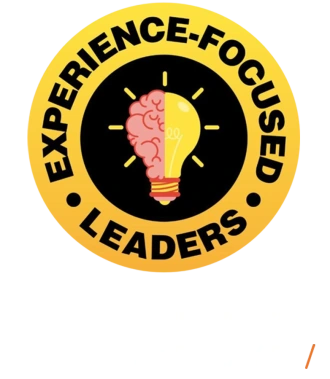Listen to the Podcast Episode on Your Favorite Platform

.svg.png)

The Art of Positioning: Building a Brand That Sticks with Andy Cunningham
.png)
Positioning is about finding a unique spot in the competitive landscape that only you can fill. That's the foundational concept. I like to quote Jack Trout and Al Ries, who wrote the first book on positioning, Positioning: The Battle for Your Mind. They describe positioning as owning real estate in the mind of the customer. It's about creating a space in their brain defined by your unique and compelling story, whatever that may be. You need to find that white space on the competitive landscape that only you can own, which gets harder each year with the thousands of new companies starting up all the time. And then, you have to articulate that in such a compelling way that it sticks in the mind of the customer or potential customer. (Andy Cunningham)
(00:01-08:26)
Alex opens by asking Andy about the confusion that often surrounds positioning, with people mistakenly equating it to branding or category creation. Andy provides clarity by explaining that positioning is about finding and owning a unique space in the competitive landscape that only your company can fill. She emphasizes that positioning is fundamentally about how your brand lives in the mind of the customer. It’s not about what you do to the product but what you do to the mind of the customer.
Quoting from the seminal book Positioning: The Battle for Your Mind by Al Ries and Jack Trout, Andy describes positioning as “owning real estate” in the customer’s mind. She stresses that in today’s market, where thousands of products flood every sector, this "mind real estate" is harder to claim, and yet more essential than ever.
Andy points out that many companies, especially those driven by engineers, often assume that building a great product will automatically attract customers. This may have worked 30 years ago when there were fewer products on the market, but in today’s hyper-competitive landscape, simply creating a good product isn’t enough.
Many companies fall into the trap of building what Andy calls "me-too" products—those that mimic competitors but don’t stand out in any meaningful way. She highlights that companies today need to offer something unique and compelling, and that goes beyond product features. In fact, modern marketing has shifted toward branding strategies that focus on the emotional connection between companies and customers. Andy says, "You have to think about your brand, not just your product." In her experience, success comes from creating a compelling, ownable brand concept that resonates emotionally with customers.
The conversation naturally turns to Andy’s work with Steve Jobs during the launch of the Macintosh. Alex asks about Jobs’ evolution as a communicator and the impact of Regis McKenna, Andy's mentor, on his storytelling approach. Andy clarifies that while Jobs was a visionary with a rebellious streak, it took time for the world to see the polished Steve Jobs we recognize today. Initially, the Macintosh was positioned as a product for non-conformists—a stark contrast to IBM’s conventional approach. The marketing campaign was akin to a "World War II-level" effort, painting IBM as the enemy and Apple as the rebellious pirate flag bearer.
But despite the bold positioning, the Macintosh didn’t succeed right away. As Andy explains, people weren’t quite ready to abandon the status quo for a disruptive, unfamiliar product. It wasn’t until Jobs returned to Apple years later that he refined the idea of an "identity brand"—where customers didn’t just buy the product but became part of a larger "tribe" that identified with Apple’s ethos.
Andy emphasizes that Apple’s genius wasn’t just in its product design but in creating an emotional connection with customers. Apple became an identity brand, where people see themselves as part of a community—“Apple people.” This connection transcends product features; it taps into the deeper emotional needs of consumers to belong to something bigger. She stresses that while Apple is an extreme example, any company can find ways to forge that emotional connection with their audience.
Andy drives home the point that, in today’s crowded tech landscape, companies need to think deeply about their positioning. With over 8,000 MarTech products alone, it’s not enough to have a good product. Companies need to find their own white space in the market and articulate a compelling brand story that resonates with customers on an emotional level.
Alex reflects on this, noting how Steve Jobs’ ability to frame Apple as a rebel company helped build the brand’s legendary status. Andy agrees, but adds that Jobs' real genius was realizing that, while the rebellious positioning worked to an extent, the emotional connection through branding was what ultimately led to Apple’s success.
.png)
The Birth of Apple’s Creative Tribe: How Positioning Saved the Macintosh
.png)
Steve originally thought he could get—just for lack of a better word—the "guys in suits" to switch over from their IBM PCs to Macs. But those weren’t the people. It was the long-haired, tattooed, pierced group sitting in the graphic design departments of these big companies who saw the benefit, and that’s what started it all. He built a tribe out of those people, because they were creative. They looked different, they sounded different, they acted different, and they thought differently. And that’s where the "Think Different" campaign came from. (Andy Cunningham)
(08:26-13:58)
The speakers dive into a key lesson in positioning: understanding your true audience. The conversation reveals how the initial failure of the Macintosh wasn’t because of the product itself but because Apple tried to sell it as a business machine—when its real audience was elsewhere.
Andy shares how, in 1983, Apple conducted focus groups where people loved the Macintosh, but when asked if their companies would buy it, the answer was a resounding "no." The machine lacked key business features and wasn’t considered a serious alternative to IBM's business-dominating PCs. Steve Jobs had envisioned it as a revolutionary office tool, but the corporate world wasn’t ready for something so unconventional. The product flopped, leading to Jobs' frustration and eventual firing from Apple.
After Jobs left, Apple didn’t kill the Macintosh. It languished for several years until Jobs returned and made a key discovery: the people who were passionate about the Macintosh weren’t office workers—they were creatives. Artists, designers, and other creators had been quietly sneaking the Mac into their workplaces, appreciating its unique design and capabilities. These weren’t the business types Jobs initially targeted—they were part of what Andy calls the "creator community."
Jobs realized this and shifted Apple’s marketing strategy to speak directly to this tribe of creative thinkers. This change led to the launch of the famous "Think Different" campaign, featuring icons like Albert Einstein and Leonardo da Vinci. By understanding and embracing the right audience, Jobs built a loyal community around the Macintosh, setting the stage for Apple’s long-term success.
Andy and Alex reflect on this story as a powerful lesson in the importance of positioning. Trying to force a product on the wrong audience can lead to failure, but aligning it with the right group—people who see the product as part of their identity—can transform everything. As Andy notes, Jobs’ brilliance lay in watching and learning from his audience, then crafting a marketing message that spoke to their core values.
.png)

How Emotions and Positioning Drive Success in B2B
.png)
Apple was probably the first company to understand that you could create an emotional attachment to a product—whether it was a computer or another device. That was a huge breakthrough in marketing. (Andy Cunningham)
(13:58-22:29)
Shifting to today’s B2B landscape, Alex and Andy talk about how things have changed—there are now more software options than ever before, which gives companies the freedom to experiment with new, cheaper tools. However, the challenge of standing out in a crowded market still exists. The conversation highlights how many companies fail to address the emotional needs of their customers, focusing instead on data and features.
Alex shares how, at RELAYTO, they try to break through the noise by focusing on how their tools can connect with the identity and aspirations of professionals. For instance, they aim to help designers not only express their creativity but also see the impact of their work. This approach shifts the focus from features and price to how people feel about their work, which creates a deeper connection to the product.
Andy agrees, emphasizing that while procurement departments in large enterprises still prioritize cost and functionality, there’s real value in creating emotional connections with a product. She explains that companies like Apple understood this early on, and though many companies today rely on data, a few are starting to see the benefit of focusing on the human side of marketing.
.png)
The Human Side of Success: How Emotional Connections and Experiences Build Powerful Brands
.png)
I believe we're entering an era, because of AI and the fear surrounding it, where the human side of everything is going to become a bigger deal. I think it's becoming more important because now we have to pay attention to it. We're all afraid that AI might take over the world and that we’ll lose the ability to control it. So, I believe we’re moving into a time where brands are going to focus more on the emotional connection they build with their customers. (Andy Cunningham)
(22:29-29:40)
The conversation takes a turn toward the impact of artificial intelligence (AI) on branding and customer experiences. Both Andy and Alex express optimism about how AI could help companies fine-tune their messaging and branding efforts. Andy predicts that, ironically, the rise of AI will lead to a renewed emphasis on the human side of branding. With fears about AI taking over certain jobs, brands will need to focus more on creating genuine emotional connections with their customers to differentiate themselves from competitors and avoid being seen as purely transactional.
Alex introduces the powerful concept of "experience is the message," a motto at RELAYTO that highlights how the overall experience a brand creates can be far more impactful than any individual marketing message. Drawing on Apple’s renowned multi-sensory brand experience—everything from the design of their stores to the iconic unboxing ritual—he explains that the most successful brands create memorable, multi-sensory experiences that go beyond language or features.
Andy agrees, noting that modern branding is no longer about creating a static image or logo, as it was in the 1970s when advertising reigned supreme. Today, people are influenced by multiple channels, peer reviews, and social validation, making it more challenging to build a lasting connection with customers. Yet, it’s this multi-sensory experience that makes brands stand out and builds the emotional bond that data alone can’t achieve.
Alex shares an anecdote from his time consulting at Salesforce, pointing out how the company consistently reinvented itself to align with new trends, while maintaining a strong focus on the customer experience. He mentions Dreamforce, Salesforce’s annual event, as a prime example of a B2B company creating a Disney-like experience that forges an emotional connection with customers. Even small elements, like the stuffed animals given away at Dreamforce, have left lasting emotional impacts on his family, demonstrating how powerful these touchpoints can be.
.png)

Attracting and Retaining Talent: Why Employee Experience Matters More Than Ever
.png)
The balance of power has shifted to employees, and they move around a lot more. They get a better offer elsewhere and leave. So, companies are now starting to think about building a better emotional connection with their employees than they had before. This is why the employee experience has become so critical—it feeds that emotional connection to the company. It’s more than just providing free food and massages. (Andy Cunningham)
(29:40-36:59)
Andy Cunningham kicks off the discussion by praising Salesforce CEO Mark Benioff, describing him as one of the best marketing minds in business. She points out that his book, Behind the Cloud, showcases how he grew Salesforce largely through innovative marketing. Alex adds that Benioff's approach was holistic, viewing marketing as a core part of building a successful company.
The conversation shifts toward the challenges companies face in HR, especially in areas like compensation and benefits communication. Alex mentions that while companies may excel in recruitment, they often struggle with explaining employee benefits, even though benefits are a major expense for every company. He highlights the confusion around healthcare policies, noting that even insurance carriers and brokers sometimes don't fully understand them.
Andy agrees, pointing out how vital it is for companies to not only focus on recruitment but also retention, especially when it comes to benefits. She notes that companies spend a lot of money on compensation and benefits to keep employees happy, but often fail to communicate these offerings effectively, leaving employees stressed about things like healthcare costs.
Andy discusses how companies are now paying more attention to their "employer brand"—a concept focused on attracting and retaining talent. She explains that in today’s competitive job market, employees have more power and expect better experiences. Employer branding should reflect the company’s overall brand, creating an emotional connection with employees through meaningful benefits and compensation packages.
Alex points out that some companies are starting to improve their benefit communications by sending detailed information to new hires right after a job offer. He describes how this approach is particularly effective in industries like healthcare, where the demand for talent is high.
Andy emphasizes that the employee experience has become central to retaining talent. She explains that perks like free food and massages are no longer enough—employees now expect a deeper emotional connection with their employers. This connection comes from culture, values, and a sense of contribution. Alex echoes this sentiment, noting that employees care about being inspired and feeling part of something bigger than just their paycheck.
.png)
Leading Through Change and Shaping Employee Experience
(36:59-46:58)
Alex introduces the concept of "micro-segmentation" in large companies, using Accenture as an example—a firm that prides itself on being a "culture of cultures." With over 600,000 employees worldwide, Accenture maintains diverse teams while ensuring alignment under a common thread. Alex questions whether some roles—like top engineers or designers in tech—are treated as "first-class citizens" while others don’t receive the same perks or recognition.
Andy agrees, noting that such disparities are becoming increasingly common, particularly in industries like tech. She draws a parallel with the world of sports, highlighting the introduction of Name, Image, and Likeness (NIL) compensation for top athletes while other players remain undercompensated. Similarly, top-tier employees at companies like Google can command eye-popping retention offers—citing an example of a Google engineer who received a $10 million offer to stay. This reflects a growing divide between the most prized talent and other employees, reinforcing the idea that some positions within a company are viewed as far more valuable than others.
Alex then introduces an intriguing question: should companies have multiple employee brands, just as they might value certain customers more highly than others? He compares this idea to customer lifetime value in industries where some customers are disproportionately more valuable. Could we see this applied to employees, where different segments receive varying levels of attention and benefits?
Andy hopes this trend doesn’t fully take hold, but acknowledges that companies will go to great lengths to retain key talent, even offering significant bonuses in secret. However, she points out that modern companies are already offering more flexibility in their benefits packages, allowing employees to choose what’s most valuable to them—whether that’s healthcare, fitness, or even pet care. This, in her view, is a liberating shift, empowering employees to tailor their experience while providing companies with a competitive edge in the market.
Shifting gears, the conversation turns to what happens to companies after visionary leaders step down. Alex references one of Andy’s previous podcast interviews where she discussed Apple’s transformation under Steve Jobs and Tim Cook. Steve Jobs was the quintessential "missionary" leader, driving relentless innovation and leading Apple to new heights repeatedly. However, after his passing, Tim Cook initially struggled to replicate that magic, but eventually found his own path by focusing on scaling and multiplying the value of Apple’s existing assets.
Andy expands on this idea, pointing to leaders like Satya Nadella at Microsoft, who, like Cook, wasn’t the visionary founder but successfully guided the company to new heights by understanding the value of the moment. Nadella didn’t try to be another Bill Gates; instead, he focused on transforming Microsoft into a cloud and enterprise powerhouse, making it one of the most valuable companies in the world. Andy explains that successful companies find new ways to create value at different stages of their journey, and visionary founders are just one piece of the puzzle. The departure of a visionary doesn’t signal the end of innovation but rather the beginning of a new phase.
However, not all companies are able to make this leap successfully. Alex presses Andy on why some organizations stumble after the loss of a visionary leader, even when they add trillions in market cap. What distinguishes the winners from the losers in these scenarios?
Andy attributes much of it to the "soft issues" of leadership—emotional intelligence, humility, and the ability to navigate change without being beholden to short-term shareholder pressures. She recounts her experiences working with Kodak under three different CEOs, as the company grappled with its digital transition. Despite inventing the digital camera, Kodak failed to capitalize on it because they were too focused on maintaining their profitable film business. They couldn’t fully commit to digital without jeopardizing their existing revenue streams, ultimately leading to their downfall.
Andy contrasts this with Reed Hastings at Netflix, who made the bold decision to shift from DVD rentals to streaming, even though it enraged shareholders and caused Netflix’s stock to plummet in the short term. Reed’s vision for the future of media was unwavering, and he guided Netflix through that difficult transition, emerging as the leader in streaming. Andy emphasizes that the companies that succeed in leadership transitions are the ones that prioritize long-term value creation over short-term shareholder gains, while staying true to their core mission.
.png)

Cracking the Code of Category Creation with Andy Cunningham
.png)
I've worked with several companies that insisted on creating a category with their product. They spent millions and millions of dollars, and they never got there because it's incredibly difficult. What I prefer is for people to think about categories much more strategically. You can move yourself from one category to another if you choose. For example, Reed Hastings did that. He was in the red-envelope business and moved into streaming, which already existed. (Andy Cunningham)
(46:58-58:34)
Andy emphasizes that while companies often see shareholder value tied to success in a specific category, shifts in consumer behavior, technology, or economic factors can create new categories. Companies like Netflix and Cisco managed to leap into these new spaces, but Andy notes that doing so is incredibly challenging—comparable to "killing your own children" in terms of the emotional and strategic difficulty involved.
Contrary to the views of some thought leaders who believe new categories can be frequently created, Andy argues that genuine category creation is a rare occurrence. He insists that most businesses should instead focus on strategic repositioning within existing categories. For example, Reed Hastings didn’t invent streaming; he transitioned Netflix from a DVD rental model into an already existing streaming category, which carried significant risk but ultimately paid off.
Andy shares a compelling case study involving Cisco’s shift from hubs and routers to the "internet economy." Working with John Chambers, Andy and her team recognized the potential of the emerging internet landscape. They redefined Cisco's positioning to encompass the internet's infrastructure, thus allowing the company to stand out in a growing field that included competitors like Microsoft and Intel.
Alex brings up how Andy helped John Chambers position himself alongside industry giants like Andy Grove and Bill Gates. By changing the venues where Chambers spoke to include only events with these influential figures, they created a perception of equal stature in the tech world. This tactic reinforced Cisco’s strategic shift, making it clear that the company was now a leader in the burgeoning internet space.
Andy cautions against letting external entities like Gartner and Forrester define your category. Instead, she insists that companies must take ownership of their positioning. This empowers businesses to craft their narratives rather than conforming to pre-existing labels.
Andy argues that instead of trying to create new categories out of thin air, companies should consider developing subcategories. For example, she cites Dodge’s unexpected creation of the minivan, which redefined consumer expectations within the automotive market. By introducing a vehicle with unique functionality, Dodge created a clear subcategory that resonated with consumers.
The discussion shifts to Tesla’s Cybertruck, which Andy describes as a "category of one." It stands out distinctly from both electric and traditional trucks, exemplifying how a well-defined subcategory can eliminate confusion among consumers and capture a niche audience.
When asked about personal branding, Andy highlights that an outgoing personality is crucial for standing out. She notes that today’s internet influencers, especially in fashion and beauty, illustrate how distinctiveness can capture attention. They showcase their uniqueness through various forms of content—video, images, and text—creating a personal brand that resonates with audiences.
Content creation is pivotal in building a personal brand. Andy praises Alex’s content experience platform for its focus on generating diverse content types. The more individuals share their stories and insights, the closer they come to establishing a strong personal brand that stands out amidst the noise of the digital landscape.
To dive deeper into these concepts, check out Andy's book, Get to Aha, available on Amazon, and connect with her for further discussions on marketing strategies.
.png)
Check the episode's Transcript (AI-generated) HERE.
Other Episodes

Godard Abel | CEO of G2
S 01 | Ep 6 Where You Go for Software: Reach Your Peak


Dean Stocker | CEO of Alteryx
S 01 | Ep 8 Turning Your Customers Into Your Biggest Champions


Peter Fader | Co-Founder of ThetaCLV
S 01 | Ep 10 Turning Your Marketing Into Dollars

Author

Experience-focused Leaders is the #1 Multimedia Podcast! We talk to senior business & tech leaders about the experiences that move forward organizations, customers and society at large. True to form, we mix audio, video, web and eBook formats to turn these authentic conversations into personalized nuggets you'll remember & use.



.png)
